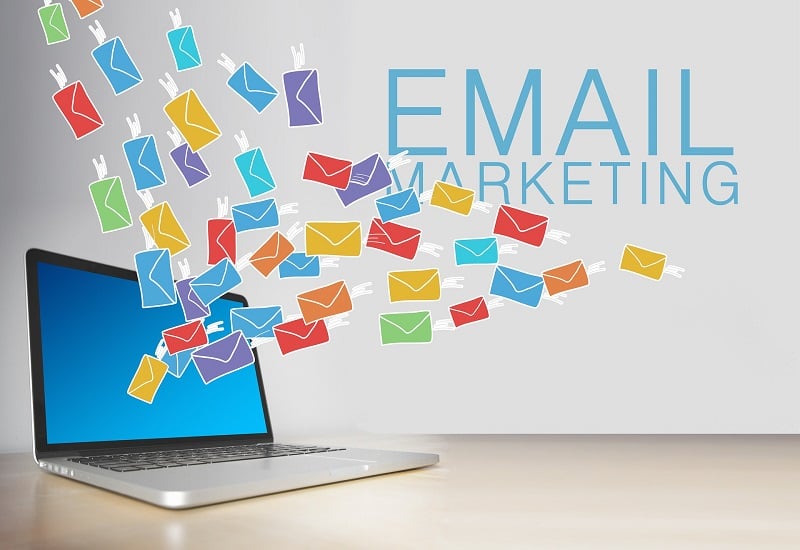When Is The Best Time Of The Day / Week To Send An Email Campaign?

All the time and effort that goes into an email marketing campaign is worth nothing if the recipient doesn’t see it, or sees it but is too busy to read it – in other words, if it is sent at the wrong time. Is there an optimum time of day and day of the week to send an email campaign? Let’s take a look.
 How To Measure Engagement
How To Measure Engagement
What are you looking for when you send an email campaign? Success can be measured by several types of engagement – i.e. what the users do when they receive your email.
1) Open rate: The total number of emails opened, compared to the total number sent. For example, 85 emails opened from a campaign of 650 emails = an open rate of 0.13, or 13%.
2) Open volume: The percentage volume of the total number of emails opened in a certain time period, e.g. the first day, per week etc.
3) Click-through rate: The total number of click-throughs, divided by the number of campaign emails.
4) Click volume: The number of clicks in a given day, week, hour, or another time period, given as a percentage of the total number of clicks.
Looking at all four factors, at different hours of the day and days of the week, gives you a sense of overall engagement, and the best times/days to send emails for consistent results. The goal of email marketing is to optimise both the open rate and click-through rate. Click volume and open volume are less important in themselves, but they do provide useful indicators of prospect behaviour, which can be used to optimise your email scheduling.
When Do People Read Emails At Work?
In most workplaces, email is still the main form of communication between colleagues, and people check emails throughout the day. However, aggregate data from Infusionsoft, HubSpot, Sendinblue and other marketing platforms show certain patterns about when people are most likely to check external emails, and much of this correlates with common sense.
Best Days To Send Emails:
- Weekdays, Monday to Friday have the highest overall levels of engagement, with engagement dropping sharply on Saturday and Sunday – an unsurprising trend for B2B emails.
- Open volume is fairly consistent from Monday to Friday, with peaks on Tuesday and Thursday.
- Click volume increases sharply on Tuesday and Wednesday, before trailing off on Thursday and Friday. This reflects workers being too tired or busy to investigate clicks on Monday following the weekend, and the onset of fatigue and deadlines towards the end of the week.
Best Times Of The Day To Send Emails:
Looking at the times of day when there is the most overall engagement, there are three peaks:
1) 10 AM to 11 AM for both click volume and open volume
2) 3 PM to 4 PM for click and open volume
These mid-morning and afternoon peaks correspond with the times workers are typically most productive.
3) Open volume trails off gradually after 4 PM. However, click volume peaks between 4 PM and 7 PM, indicating people who have opened the email previously but have not had time to investigate the link until the close of the working day.
It is reasonable to infer from this that the best general times to schedule emails for maximum engagement are Tuesday and Wednesday mornings, 10 AM to 11 AM, and 3 PM to 4 PM on any weekday.
Does The Sector Make A Difference?
Is this true for all industry sectors? Interestingly, no. Levels of engagement differ from sector to sector, even within the B2B marketplace. So let’s go further and break these timings down by sector:

Know Your Audience
Before you race off to schedule your emails, what you need to keep in mind is there is a lot of data out there about engagement patterns. There are dozens of email marketing platforms, many of which have published reports from engagement data. Some of the findings correlate, and in this article we’ve tried to be as consistent as possible, but there are also marked inconsistencies between some of the reports.
The lesson to take away is that you can’t generalise a prospect’s behaviour from global data – you need to know your audience. If you know that your target customers – i.e. the human beings who will read, open and act on your emails – habitually check their mail on the train home, or with a cup of tea at 6 AM, then schedule your campaigns accordingly, whatever you might read in a blog.
Working with an agency can be a real benefit when optimising your email campaigns because you can construct ideal buyer personas. These fictitious profiles, based on real-world data, give you a very good idea about engagement patterns – and how prospects are likely to receive your content.
If you’d like to discuss the best strategies for your sector and business and see how you can boost your ROI from email marketing, please get in touch today. Call 01332 982197 or send us a message through our enquiry form.
Image source: Pixabay


